How to Plan the Perfect Trip to Florida's Sanibel Island — With Charming Inns, Beautiful Beaches, and a 190-mile Paddling Trail
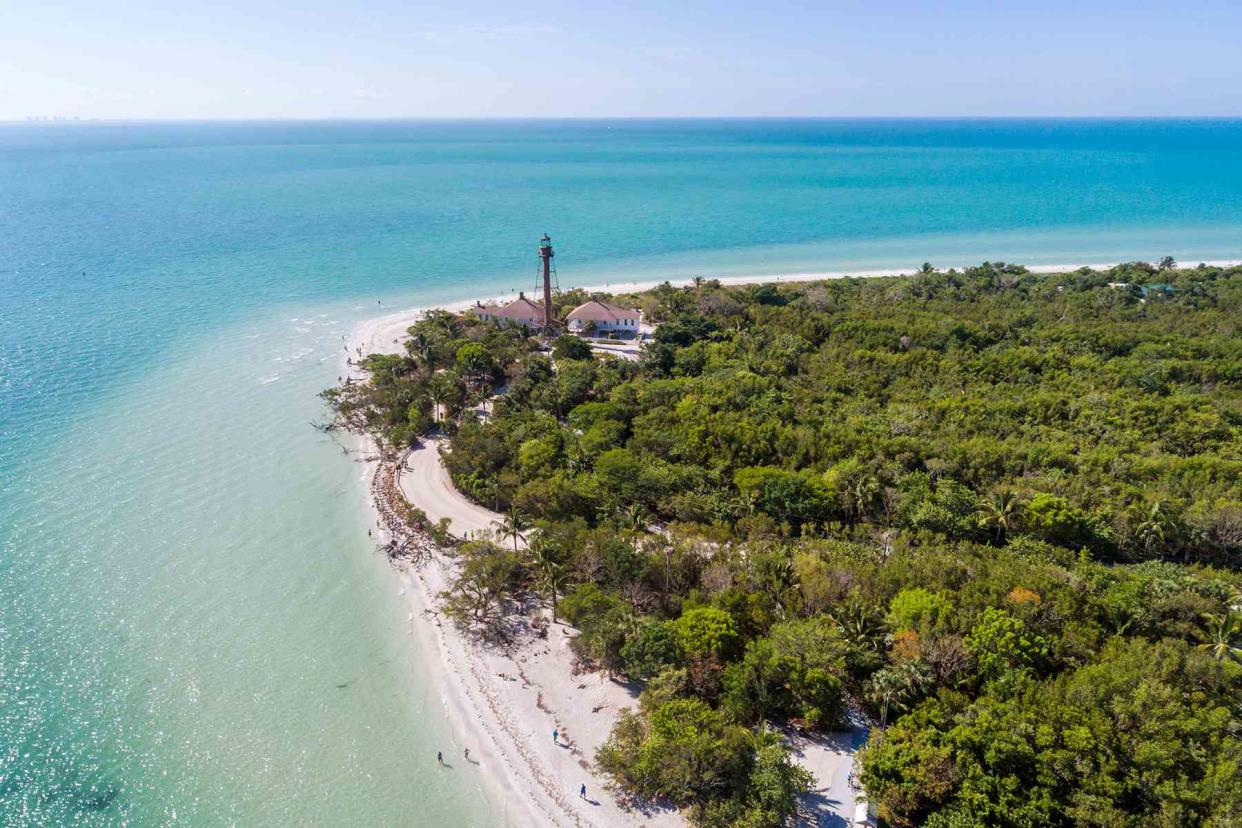
Jeff Greenberg/Getty Images
Unless you’re a hobby sheller, Florida’s Sanibel Island flies delightfully under most tourist radars. Located about 25 miles south of Fort Myers, this family-friendly, 33-square-mile barrier island is famous for its cache of more than 400 different types of shells — especially sand dollars and scallop, clam, and tulip varieties — forming a veritable treasure trove for collectors.
Together with its little sister, Captiva Island, Sanibel is one of the best places in the world for shelling, thanks to its unique geography and curved shape. According to The Islands of Sanibel & Captiva Chamber of Commerce, “The east-west torque of Sanibel’s south end acts like a shovel, scooping up all the seashells that the Gulf imports from the Caribbean and other southern seas.”
Whether you go to sift through the shells, explore the unique ecosystem, or simply enjoy the beautiful beaches at leisure, Sanibel Island is the vacation destination of many visitors’ dreams.
Best Things to Do on Sanibel Island
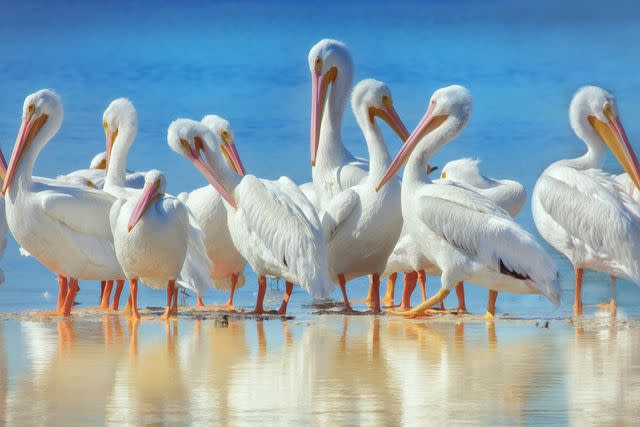
Vicki Jauron, Babylon and Beyond Photography/Getty Images
You can’t vacation on Sanibel Island without learning the Sanibel Stoop, also known as the Captiva Crouch. This alliterative nickname describes the position assumed by amateur and seasoned shellers alike — a bent-over posture that’s not ideal for spinal health, but is the prime position for spotting and scooping up shells along Sanibel’s shoreline.
On Sanibel, instead of beach days spent sunning and swimming, visitors shuffle around with buckets, bags, and nets for their finds. There’s even an annual Sanibel Shell Show — coming up on 86 years running — each March, when aficionados convene to show off their wares and admire shell art and the impressive collections of longtime shellers. If you want to know what all the fuss is about, don’t miss the Bailey-Matthews National Shell Museum, which has touch pools and a Great Hall of Shells showcasing some of the largest and most impressive shells ever found.
Of course, the shell shops in the area are also a must. You’ll find every sort of gift, home good, and collectible out there — all made from the area’s famous conchs, cockles, and coquinas.
While gastropods and bivalves are the main draw of Sanibel and Captiva, even non-shellers love visiting. Popular beaches include Bowman’s Beach, which attracts windsurfers and sailors, and Blind Pass Beach, an off-the-beaten-path stretch between Sanibel and Captiva. There’s also fishing, golf, tennis, pickleball, water sports, arts and entertainment, and bike, moped, and Segway rentals.
Nearby, don’t miss the 5,200-acre, wildlife-filled J.N. (“Ding”) Darling National Wildlife Refuge, where visitors can kayak, hike, bike, or drive through. The 190-mile Great Calusa Blueway paddling trail, a canoe and kayak route, is another popular activity.
Where to Stay on Sanibel Island
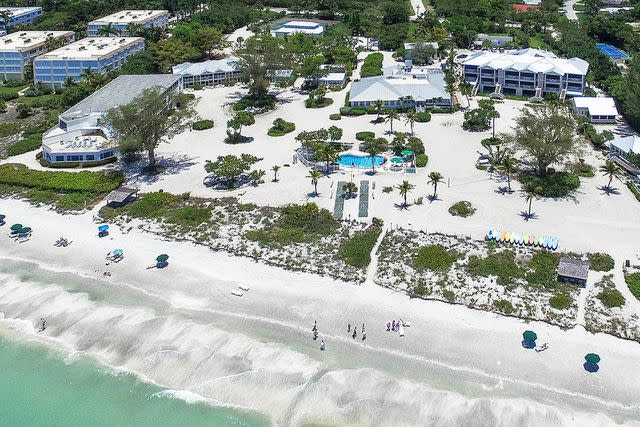
Courtesy of Island Inn
From vacation homes to small inns and cottages, there are plenty of accommodation options on Sanibel Island.
Love plants as much as shells? The Botanical Gardens at Sanibel Moorings Resort have hundreds of varieties of native and non-native plants. Even non-guests come to see the impressive gardens, with public tours available weekly.
The 23-acre beachfront Casa Ybel Resort has all Gulf-facing suites with balconies, private entrances, and sandy paths to the beach, not to mention two on-site dining options: Coconuts Poolside Bar & Grill and the award-winning Thistle Lodge. The resort also has recreation options, from biking to pickleball, and a full-service spa.
Families flock to the Island Inn, which has beachfront rooms, cottages, and vacation homes along 10 acres of Gulf coastline. There are bicycle, kayak, and paddleboard rentals, lawn games, and even a shell-washing station, plus daily beach walks with a marine naturalist from the Bailey-Matthews National Shell Museum.
Best Time to Visit Sanibel Island
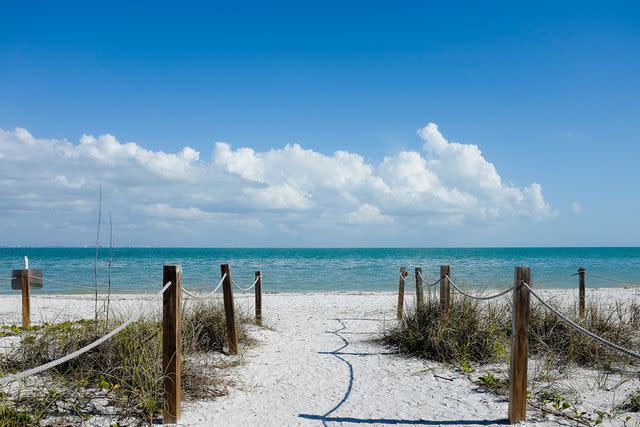
Paul Carter/EyeEm/Getty Images
When it comes to the best time to visit Sanibel Island, the good news is the weather is quite nice all year round. January to April is peak season; as springtime hits, temperatures hover in the mid-70s and snowbirds and shellers arrive in droves.
If you want to go during a quieter time of year, consider the shoulder-season month of May — the water is warm and the sun is almost always shining. The summer can be rainy, especially during the Atlantic hurricane season, but the drier winter season comes with a drawback of its own: The water is a bit too chilly to comfortably swim in (at least for Floridians).
Where to Eat and Drink on Sanibel Island
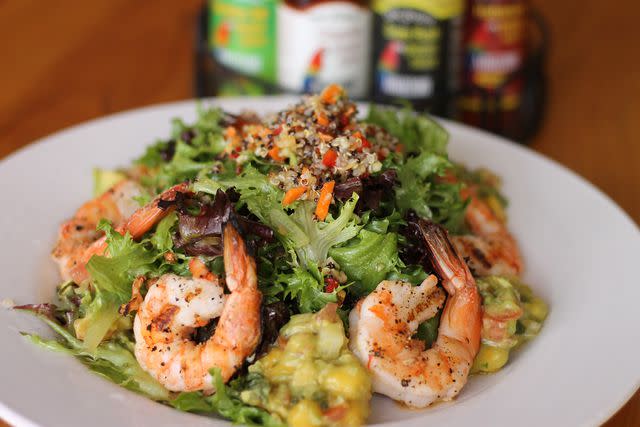
Courtesy of Doc Ford's Rum Bar & Grille
There are a lot of eatery options on Sanibel and Captiva islands, but sampling fresh local seafood is key no matter where you go.
Sanibel Fish House is a favorite, and Doc Ford’s Rum Bar & Grille is a popular area chain serving Caribbean-style seafood and a large rum selection. Or, branch out and sample Cajun eats at MudBugs Cajun Kitchen. Swankier spots for steaks and seafood include Cielo and The Sandbar, while The Island Cow is a longtime family favorite.
The Lazy Flamingo, a Southwest Florida tradition, promises, “If our seafood were any fresher, we would be serving it underwater.” This is, in part, thanks to the fact that you can bring in your own (cleaned and filleted) fresh catch and have the kitchen cook it up blackened, grilled, mesquite grilled, or fried. It can be served as a sandwich or platter with all the trimmings plus fries for just $10.99.
Whatever you do, don’t leave without stopping at The Bubble Room on Captiva Island. It’s famous across Florida for its fabulous cakes and funky, nostalgia-fueled interiors — think Christmas meets the Golden Age of Hollywood. (The orange crunch cake is a must-try.) Bubble bread and sticky buns are served with every entrée.
Getting There
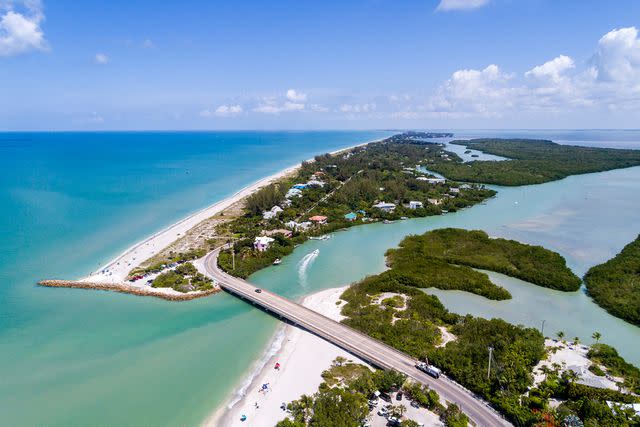
Jeff Greenberg/Getty Images
Southwest Florida International Airport, located an easy 45-minute drive from Sanibel and Captiva islands, is the closest hub. Flying into Miami, Fort Lauderdale, Tampa, or Orlando is also an option; you’ll take I-75 no matter which direction you come from. Sanibel is also easy to access by car, with just two main roads running parallel to each other to ensure your island vacation is as stress-free as it gets.

